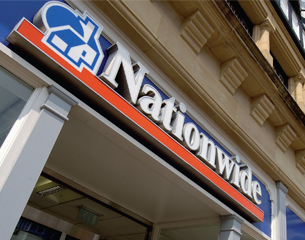
If you read nothing else, read this…
- The 30-40 age group still has time to make up a pension saving shortfall, but delaying past 40 makes the task much more difficult.
- The first step in encouraging this group to save more is to explain the tax advantages of pensions, the paucity of the state pension and the kind of retirement lifestyle different levels of savings will sustain.
- Auto-escalation is often mooted, but works best in an environment of real pay rises.
For an employer, older workers who defer retirement owing to inadequate retirement savings can spell higher costs, blocked career paths and lost talent.
Sadly, the pension pots generated by defined contribution (DC) schemes typically fall short of providing a comfortable retirement if contribution levels are low. Actuaries calculate that contributions of 14-16% of salary are required throughout a person’s career to achieve a pensions income target of two-thirds of pre-retirement income. Many employers do offer contributions of 8-9%, which works if they are matched by the employee, for example.
Age gap
However, the 14-16% savings rate suggested is for contributions across the duration of an employee’s entire career and any delay has a huge impact. While an average earner who joins a workplace pension at age 22 and contributes continuously until state pension age needs total contributions of 11% to have a two in three chance of adequate retirement income, for those in their 40s the contributions required rise to 26%.
Employees in the 30- to 40-year age group therefore fall into a sweet spot with sufficient time left to save an adequate pension pot.
Targeted pensions communications
As with all age groups, the pension communication piece will need to explain the tax efficiency of contributions. A recent survey by Aviva, conducted in August 2015, showed that despite all the publicity around pensions, 65% of respondents still do not know that the government pays 20% into their pots through tax relief. Many also do not appreciate that the state pension, at say £8,000, is still £4,000 below the living wage, nor that the changes to the system due to be introduced next April will leave some worse off.
In addition to those universal explanations, to be effective, communications must be closely tailored to the target audience, rather than carpet-bombing with tired images such as the still-handsome couple, or cardboard boxes that open to reveal different lifestyle choices.
Brian Henderson, UK DC and savings leader at Mercer, says: “We need to engage with [employees] in the way they are used to accessing information. This group tends to use Twitter and Facebook so communicate via their smart phones and Ipads, but as they are a group drowning in information because of the way they accept it, any messages must be clear, concise and straight to the point. In particular, I think it is important to make it obvious what action [an employer] is expecting people to take.”
Pensions modelling
Discussions might start with the kind of retirement that could be purchased with the current projected pot, looking first at the minimum income required to cover household bills, and then the employee’s further aspirations.
Making modellers easy to use with few inputs can help employees to get through the process and see the outcomes more clearly, while more sophisticated modellers can be made available to those who are interested.
Themed campaigns can encourage engagement.“Using imagery to help [employees] visualise future life in retirement, such as ageing software, seems to engage this age group,” adds Henderson.
The pensions industry talks a lot about raising contribution levels by auto-escalation, an arrangement where member contributions rise annually by a set increment, commonly 0.5 or 1%. This is generally timed to coincide with annual pay rises so employees will not feel the deduction too keenly. The employee’s pension then grows with more momentum owing to the compounding of the increased contributions.
The concept has been popular in the US where savers typically start paying 5% into their 401(k) plans, and build it up by 1% every year, but employees will find it less acceptable in an environment where pay rises tend to be small.
“We will need to see real pay increases for that to work here,” says Damian Stancombe, partner at Barnett Waddingham. “Most pay increases are just inflation-matching and many people have immediate debt issues that would take priority.” A dialogue should focus on educating people that they have a choice to either save a lot or to work longer, possibly in a different environment, says Stancombe.
“The 30- to 40-year-old cohort is an important one,” says Ann Flynn, senior consultant at Towers Watson. “We know that one in four employees have postponed their retirement; 75 is the new 65 [according to Towers Watson’s The Global Pensions Asset Study 2015, published in February 2015]! We’re seeing [employers] taking a different approach for different age groups and categories, using the positive impact from the growing awareness of the new freedoms.”
In order to keep the talent pipeline flowing, employers must ensure this generation of employees are prepared for retirement, whether that is through their income or the age they will be leaving employment.
 Nationwide uses communications to increase staff pension contributions
Nationwide uses communications to increase staff pension contributions
The Nationwide group personal pension (GPP), established in 2007, has over 11,000 members. From September 2015, the building society raised its standard contribution rate to the pension scheme from 9% to 13% and has also undertaken to match employees’ additional contributions up to 3%. The minimum employee contribution rate remains at 4%, but if members choose to save an additional 3%, then with the matched contributions the total employer contributions is 16% and the total combined contribution rate is 23%.
To encourage employees to save more, the scheme automatically sets members’ additional contributions to 3%, enabling them to receive full matching from Nationwide. Members must take specific action if they want to adjust this optional 3%.
Amanda Innes, internal communication partner, says: “We recognised early on that for employees to fully understand the changes, they would first need some simple education about how their scheme works and pensions in general, so we developed a communications strategy over three phases, spread across the year.”
The strategy included an interactive knowledge-sharing session for employees on pensions and a competition to design a poster illustrating their retirement dreams.
The changes were then announced through a wide range of communications channels. Employees also received personalised comparison statements to illustrate the difference the contribution uplift could make to their retirement income.
“True success will be evidenced after the new year when we can measure how many members opted to reduce their additional contributions compared to the number that realise the value of keeping it at the default level,” Innes adds. “Our employees now feel more informed and have begun planning more for their retirement.”
 Jackie Wells: Engaging all generations of a workforce in making informed pensions decisions
Jackie Wells: Engaging all generations of a workforce in making informed pensions decisions
The world of pensions has seen enormous change over recent years. Thanks to auto-enrolment, millions more are now saving for their retirement in a workplace pension scheme. And following the radical pension reforms announced by chancellor George Osborne in the Budget 2014, savers now have more choice than ever before in how they access their defined contribution (DC) pension savings at retirement.
Research conducted by the PLSA in October 2015 tells us that around a third found the process of making a decision about how to access their DC retirement savings harder than expected. Respondents almost unanimously (99%) agreed they should be ultimately responsible for making the final decision about what to do with their DC pension savings, but about three-fifths still wanted support and guidance, and just under a fifth would choose their scheme or provider to help them make a decision.
A good-quality pension scheme can play an important part of both an organisation’s staff recruitment and retention strategy, and its transition management strategy. While auto-enrolment is doing a great job at nudging people into pension saving in the first place, employers can help communicate the options available at retirement to help complement the government’s guidance service, Pension Wise. Engaging employees in pensions from a young age can give them the best possible chance to achieve a decent income in retirement. Speaking to older employers about pensions can help them make informed decisions about what to do with their savings as they approach retirement.
Jackie Wells is head of policy and research at the Pensions and Lifetime Savings Association (PLSA)